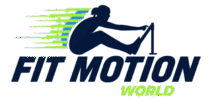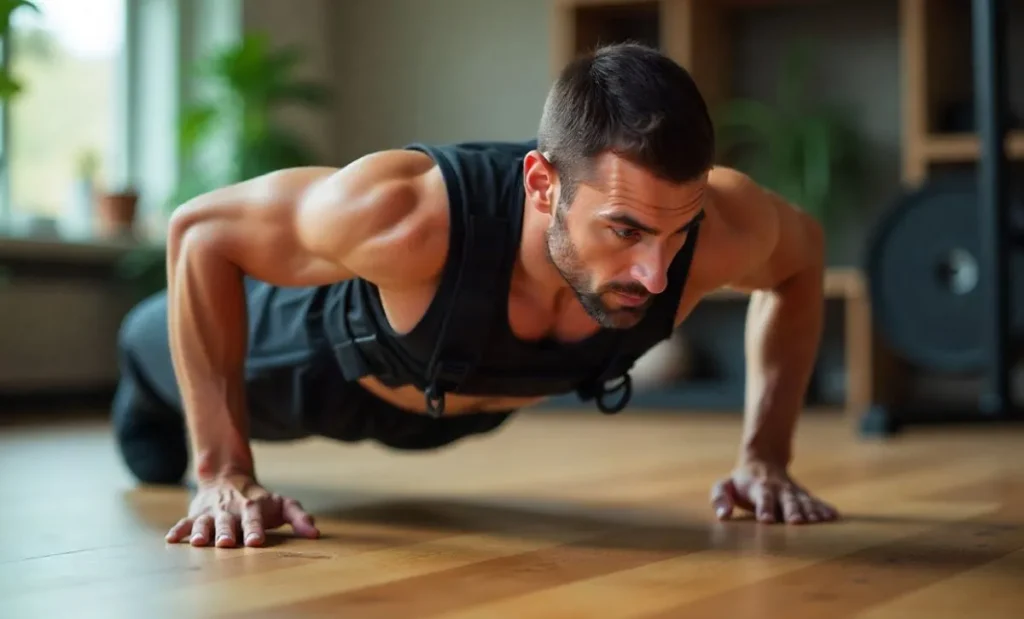Best Home Rowing Machine for Beginners: You want full-body workouts without destroying your joints. You need cardio that actually builds muscle. Rowing machines deliver both—and they’re perfect for beginners who want real results.
I’ve tested countless rowing machines, from basic models that fell apart in weeks to professional-grade monsters that cost a fortune. The right beginner machine makes every workout enjoyable. The wrong one? It’ll frustrate you into quitting.
Let me show you exactly what works for someone just starting out.
Quick Pick: Our #1 Recommendation
Concept2 RowErg (Model D) dominates the beginner market. It’s the same machine used in gyms worldwide, handles up to 500 pounds, and features the smoothest rowing motion you’ll find. At around $1,000, you’re investing in a machine that lasts decades.
The air resistance adjusts automatically to your effort. The PM5 monitor tracks every metric beginners need. And it breaks down in 2 minutes for storage.
5 Best Rowing Machines for Beginners Right Now
1. Concept2 RowErg Model D
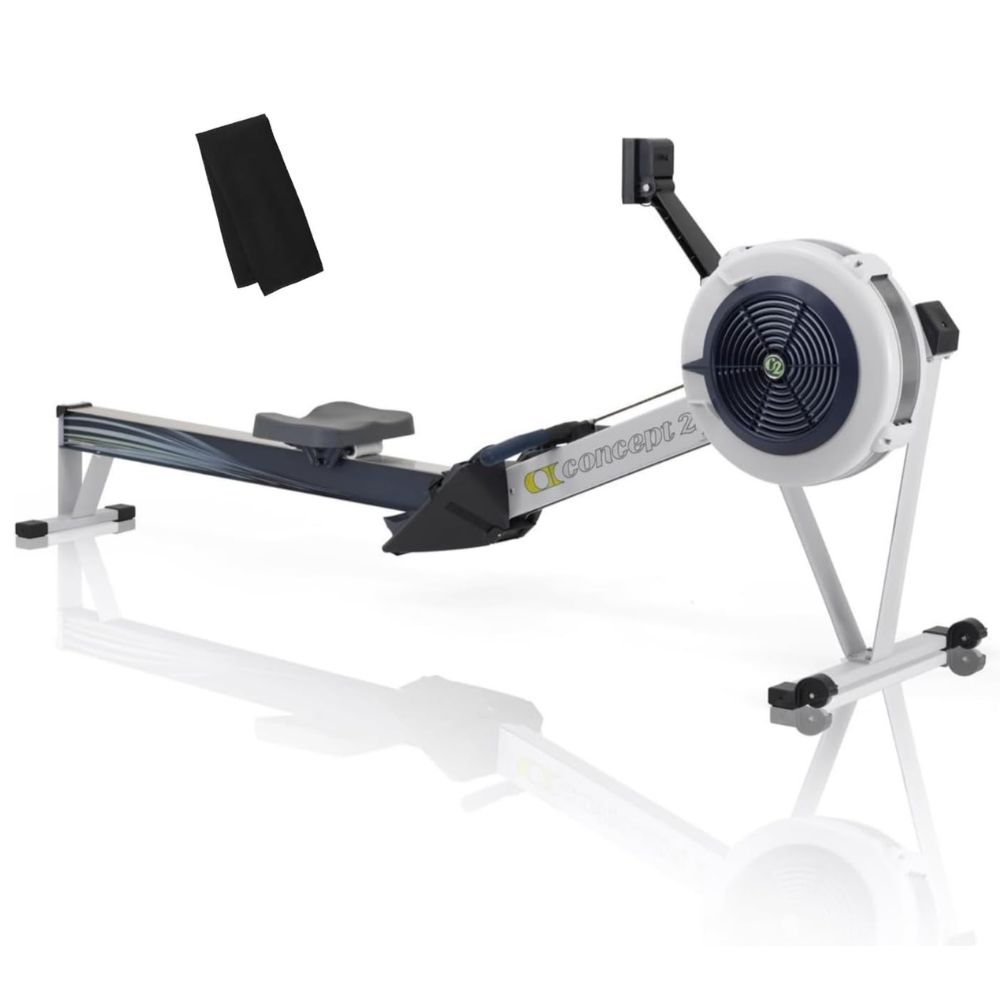
Best For: Serious Beginners
This is the machine I recommend to anyone ready to commit to rowing. It’s built like a tank, feels natural from your first stroke, and grows with you as you get stronger. You’ll never outgrow it.
The flywheel design mimics water rowing perfectly. No jerky movements. No awkward resistance changes. Just smooth, consistent pulls that feel right every single time.
Specs:
- Weight capacity: 500 lbs
- Dimensions: 96″ L x 24″ W (in use)
- Air resistance with damper control
- PM5 performance monitor included
- Separates into 2 pieces for storage
Pros:
- Smooth air resistance adapts to your effort
- PM5 monitor with app connectivity
- Virtually maintenance-free
Cons:
- Higher price point
2. Sunny Health & Fitness SF-RW5515
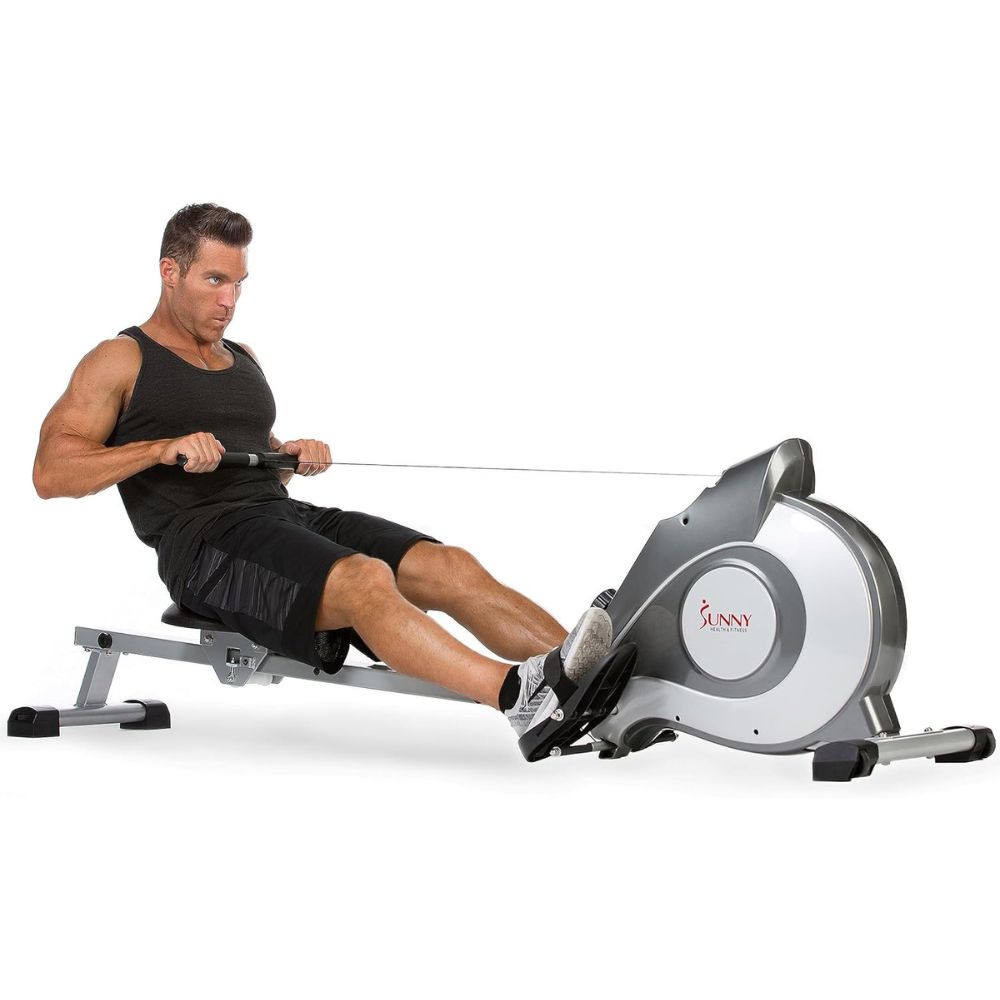
Best For: Budget-Conscious Beginners
You want to start rowing without spending a fortune. This magnetic resistance machine costs less than two months of gym membership but delivers years of solid workouts.
I’ve used this for months in my home gym. The 12 resistance levels give you plenty of room to progress. The LCD monitor keeps you motivated with basic metrics.
Specs:
- Weight capacity: 250 lbs
- Dimensions: 82″ L x 19″ W x 23″ H
- 12 levels of magnetic resistance
- Built-in device holder
- Transportation wheels included
Pros:
- Under $300 with solid construction
- Silent magnetic resistance
- Padded seat for comfort
Cons:
- Basic monitor features
3. Hydrow Wave Rowing Machine

Best For: Tech-Savvy Beginners
You learn best with guidance and want workouts that feel like experiences, not chores. This connected rower brings live and on-demand classes straight to your home with stunning HD quality.
The electromagnetic resistance feels incredibly smooth. The 16″ screen makes you forget you’re in your living room. And the compact design fits spaces where full-size rowers won’t.
Specs:
- Weight capacity: 375 lbs
- Dimensions: 80″ L x 24″ W x 47″ H
- Electromagnetic resistance (computer-controlled)
- 16″ HD touchscreen included
- Bluetooth connectivity for heart rate monitors
Pros:
- Thousands of instructor-led classes
- Quieter than air resistance models
- Real-time performance tracking
Cons:
- Requires monthly subscription
4. Stamina Body Trac Glider 1050
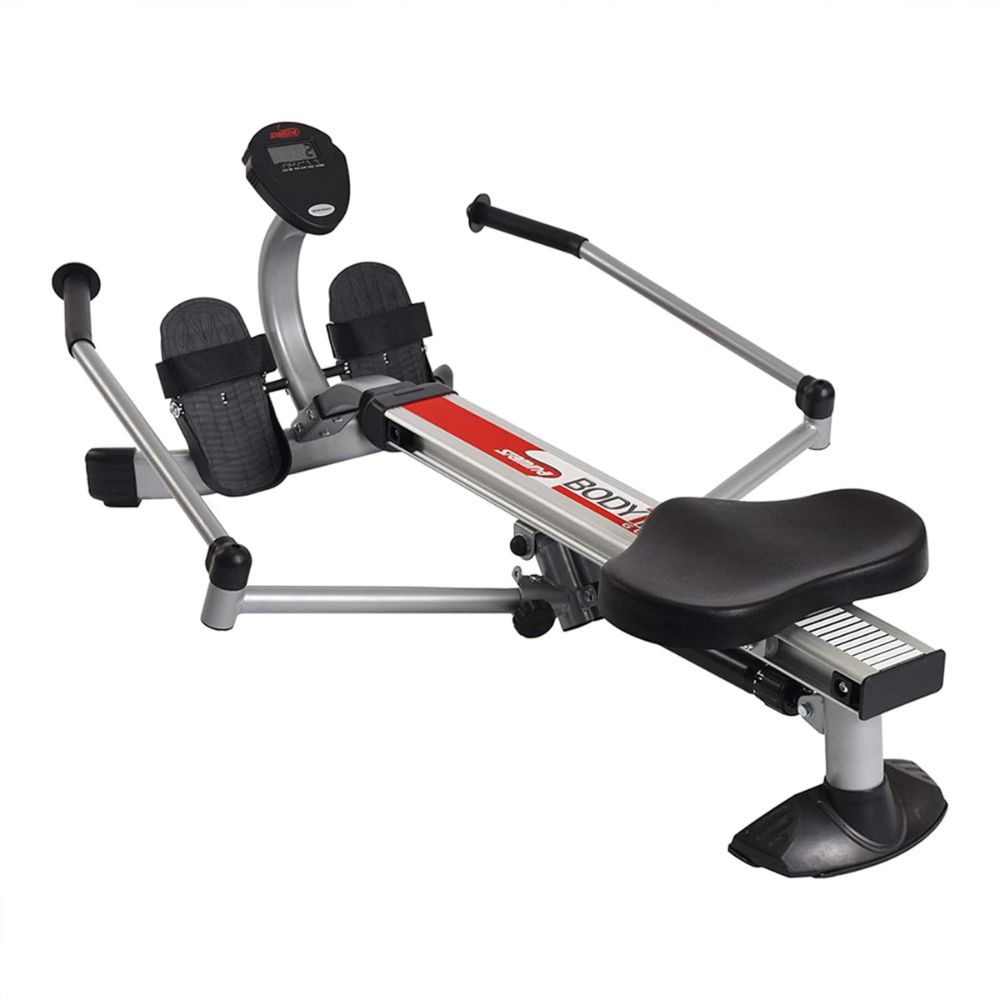
Best For: Absolute Beginners on Tight Budgets
You’ve never rowed before and want to test the waters without major investment. This hydraulic rower costs less than a nice dinner out but gets you moving immediately.
Yes, it’s basic. No, that’s not a bad thing for true beginners. The simple hydraulic arms teach proper form without overwhelming you with features.
Specs:
- Weight capacity: 250 lbs
- Dimensions: 58″ L x 18″ W x 12″ H
- Hydraulic cylinder resistance
- Multi-function monitor
- Folds completely for storage
Pros:
- Under $150 makes it ultra-affordable
- Tiny footprint perfect for small apartments
- Folds to slide under beds or in closets
- Zero assembly required—unfold and row
Cons:
- Hydraulic resistance doesn’t match natural rowing feel
- Monitor lacks advanced metrics
- Less durable for long-term heavy use
5. WaterRower Classic

Best For: Beginners Who Value Aesthetics
You want equipment that works hard but looks like furniture, not gym machinery. This handcrafted wooden rower belongs in your living room, not hidden in a basement.
The water flywheel creates the most authentic rowing experience possible. Every stroke sounds and feels like you’re on a real lake. It’s meditation in motion.
Specs:
- Weight capacity: 1,000 lbs
- Dimensions: 84″ L x 22″ W x 22″ H
- Water resistance (self-regulating)
- S4 performance monitor
- Handcrafted solid wood frame
Pros:
- Beautiful wooden design
- Authentic water resistance feel
- Whisper-quiet operation
Cons:
- Premium pricing
What to Consider When Buying Your First Rowing Machine
Resistance Type Determines Your Experience
Air resistance (like Concept2) gets harder as you pull faster. It mimics outdoor rowing perfectly and requires zero adjustments. The downside? It makes a whooshing sound some people love, others tolerate.
Magnetic resistance stays whisper-quiet and offers preset levels you manually adjust. Perfect for apartments or late-night workouts. The feel doesn’t quite match air resistance but comes close on quality models.
Water resistance delivers the most realistic rowing sensation and sounds therapeutic. Maintenance is minimal but does exist. Expect higher prices for quality water rowers.
Hydraulic resistance costs the least but feels the least like actual rowing. Arms move independently rather than pulling a single handle. Fine for casual exercise, limiting for serious training.
Monitor Features Matter More Than You Think
Beginners need basic metrics: time, distance, strokes per minute, and calories burned. That’s it. Fancy models add heart rate monitoring, Bluetooth connectivity, and app integration.
Start with basics. Upgrade later if you fall in love with rowing. The Concept2 PM5 monitor hits the sweet spot—simple enough for day one, detailed enough for year five.
Size and Storage Shape Your Reality
Measure twice, buy once. Rowing machines stretch 7-8 feet long when in use. You need clearance behind you for the sliding seat. Most people need at least 9 feet of space total.
Look for models that fold, separate, or store vertically if space is tight. The Concept2 splits in half. The WaterRower stands upright. The Stamina folds completely flat.
Weight Capacity Isn’t Just About Your Current Weight
Buy for the capacity you need plus 50 pounds minimum. Rowing creates dynamic forces beyond your static weight. A 200-pound person should look for 300+ pound capacity.
Higher capacity usually signals better build quality anyway. It’s a good shortcut for finding durable machines.
Noise Level Affects Household Harmony
Air rowers make a distinct whooshing sound. Not loud, but noticeable. Magnetic rowers run nearly silent. Water rowers produce gentle sloshing. Hydraulic models stay very quiet.
Consider your living situation. Apartment dwellers should lean toward magnetic or water resistance. Home owners with dedicated gym spaces can choose freely.
Comfort Features Prevent Early Quitting
Padded seats matter for beginners who haven’t built up tolerance yet. Adjustable footrests keep your feet secure and comfortable. Ergonomic handles prevent hand fatigue and blisters.
Test the seat height if possible. Lower seats make getting on and off easier for beginners. Higher seats often provide better rowing mechanics once you’re comfortable.
Your Fitness Journey Starts Here
Rowing machines changed my approach to cardio forever. They’ll do the same for you.
You don’t need perfect form on day one. You don’t need to row for 45 minutes straight. Start with 10-minute sessions focused on smooth, controlled strokes. Add time and intensity as your body adapts.
Choose the Concept2 Model D if you want the best overall beginner machine. Grab the Hydrow Wave if you thrive on guided workouts. Pick the Sunny Health SF-RW5515 if you’re watching your budget carefully.
But whatever you choose, stop researching and start rowing. Your stronger, healthier body is waiting.
Frequently Asked Questions
Is rowing machine good for complete beginners?
Absolutely. Rowing is low-impact, works 86% of your muscles, and lets you control intensity perfectly. Most beginners can row comfortably within their first session. Start with 10-minute workouts at easy pace and build gradually. The learning curve is gentle compared to running or cycling.
How long should a beginner row?
Start with 10-15 minutes per session, 3 times per week. Focus on smooth technique rather than speed or distance. After 2-3 weeks, increase to 20 minutes. By month three, aim for 30-minute sessions. Listen to your body and progress at your own pace.
What’s better for beginners: air or magnetic resistance?
Magnetic resistance wins for most beginners. It’s quieter, requires less maintenance, and lets you easily adjust difficulty levels. Air resistance (like Concept2) offers a more authentic feel but makes more noise. Both work excellently—choose based on your environment and preferences.
Will rowing help me lose weight as a beginner?
Yes, when combined with proper nutrition. Rowing burns 400-600 calories per hour at moderate intensity while building muscle. The muscle-building aspect boosts your metabolism long-term. Consistency matters more than intensity for beginners—regular 20-minute sessions beat occasional hour-long marathons.
Do I need special shoes for rowing machines?
No. Regular athletic shoes work perfectly for most rowers. Some people prefer rowing in socks or barefoot for better foot strap contact. Avoid bulky shoes that don’t fit easily in the footrests. Whatever feels secure and comfortable is the right choice.
How do I avoid back pain when starting rowing?
Focus on form over speed. Push with your legs first, lean back slightly, then pull with your arms—in that order. Keep your core engaged throughout the stroke. Start with shorter sessions to build supporting muscles gradually. If pain persists despite good form, consult a professional before continuing.
